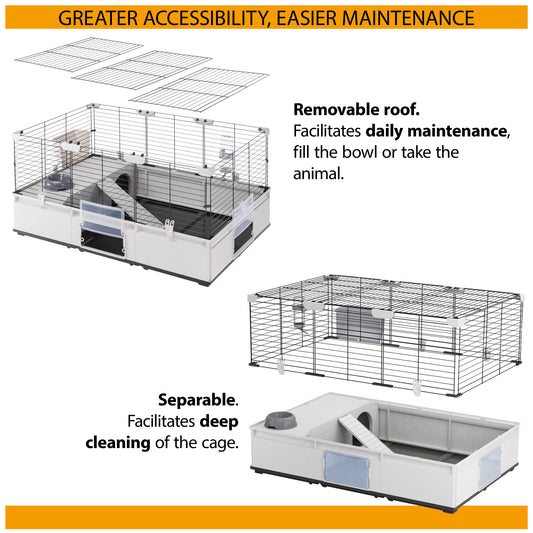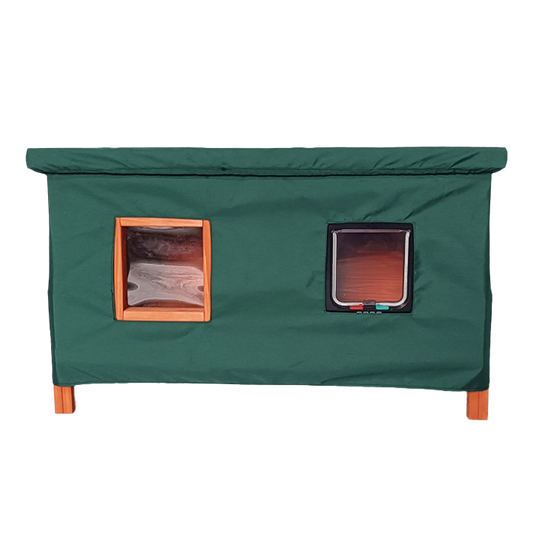When the weather warms up, parasites thrive so it’s important that you make sure your dog is protected from picking up any nasty hangers-on. The main parasites that affect dogs are fleas, ticks and worms. Find out how to keep your pet safe with our handy guide.
Fleas
What are they?
Fleas are tiny jumping insects, about 1-2mm in length, that feed on the blood of a host animal. They multiply at an incredible rate with female fleas laying up to 40 eggs every day.
How do dogs get them?
Fleas can be passed on from another dog or cat in the home, or picked up in the garden or during a walk.
How do you know if your dog has them?
The main sign that a dog has fleas is scratching. When fleas bite a dog to feed, they inject a small amount of their saliva into the skin. This can cause an intensely itchy response, with some particularly sensitive dogs developing allergies to flea bites.
Other signs that your dog has fleas include bald patches or rashes, as well as the presence of tiny black specks of flea dirt on the coat. If you find what looks like flea dirt on your dog you can test it by placing a sample of it on to some white paper towel and sprinkling it with water. Flea dirt contains dried blood so if the paper towel turns reddish-brown in colour you can be sure that you are faced with fleas and should treat your pet accordingly as soon as possible.
How do you get rid of them?
The tricky thing about fleas is that by the time you notice them on your dog, quite often your home will already be infested. For every 50 fleas found on your dog, there will be a further 1,000 elsewhere in your home – usually hiding in your carpets, furnishings and bedding.
The key to getting on top of a flea infestation is to break the insect’s lifecycle so they can no longer reproduce. Chemical treatments such as spot-ons, tablets, flea collars and coat sprays can all be used to kill fleas, but if there are still fleas in the home your pet will quickly pick them up again. For successful flea treatment all the pets in the home need to be treated at the same time, as well as the home environment, to prevent reinfestation.
How do you prevent them?
Getting rid of an established flea infestation can be time consuming and frustrating. It is much better to prevent your dog from getting fleas in the first place. Speak to your vet about what treatment regime would most suit your pet and treat them regularly – usually every three months – to ensure they are protected.
It is also helpful to vacuum frequently, especially under furniture and around your pet’s bedding. You should also wash any bedding or blankets that your pet sleeps on at 60 degrees C or hotter to kill any fleas or eggs that might be present.
Ticks
What are they?
Ticks are spider-like parasites that are commonly found in woodland and areas of long grass where they wait for passing host animals to attach themselves to. When a tick first becomes attached to a host animal it will be about the size of a poppy seed but once it starts feeding it will engorge with blood and can reach the size of a baked bean.
How do dogs get them?
Dogs will pick up ticks by walking through areas where the parasites are waiting for host animals. This is usually in long grass or low shrubs at a height of around 18 to 24 inches off the ground. Ticks are commonly found in areas where there have been sheep or deer.
Ticks can carry a nasty bacterium that causes Lyme disease in dogs – a potentially serious condition that can affect the joints and kidneys. It is important, therefore, to remove any ticks as soon as you find them and to guard against them with preventative treatments.
How do you know if your dog has them?
Ticks can be quite tricky to spot when they are tiny but it is good practice to check your dog over thoroughly straight after walks in woodland or long grass. Pay particular attention to your dog’s head, ears, belly, groin and armpits, as they are common areas for ticks to attach themselves.
A tick that is feeding from a dog will have its head buried under the skin and its body will look like a pink or light brown skin tag. If you look closely, you should also be able to see the tick’s legs moving on either side of its body.
How do you get rid of them?
If you spot a tick on your dog, never try to remove it by pulling, squeezing or crushing it. This can result in part of the tick being left inside of your dog’s body and could become infected.
The trick to removing a tick is to ‘unscrew’ it with a handy and inexpensive tick hook that are available from most pet stores. Slide the tick hook as close to your dog’s skin as possible and twist it slowly without pulling until the tick comes away.
How do you prevent them?
Speak to your vet regarding regular tick prevention for your dog. Many of the leading flea treatments will also guard against ticks so it might be that you only need to use one product for both.
Worms
What are they?
The two main parasitic worms that dog owners need to be aware of are roundworms and tapeworms. Roundworms are long, thin and white. They will initially infect a dog’s intestinal tract but can burrow into other organs. Tapeworms are long and flat in appearance. They live in the small intestine where they absorb nutrients as a dog digests food.
How do dogs get them?
A dog can develop roundworms after ingesting soil or faeces that is contaminated with worm eggs or larvae. Many puppies are born with roundworms from their mothers so it is common practice to treat them early.
Tapeworms can be picked up if a dog ingests a flea (such as accidentally swallowing one while licking themselves) that hatches a tapeworm egg into their intestinal lining.
How do you know if your dog has them?
Intestinal worms do not often cause serious illness in dogs and you might not even realise that your pet is carrying them. If your dog has roundworms, you won’t be able to see them but signs that they could be makin your dog ill include vomiting, diarrhoea, lethargy, swollen abdomen or a cough.
Evidence of tapeworms can sometimes be seen in infected dogs. When excreted, sections of the worm may break off looking like small grains of rice in the stool.
How do you get rid of them?
There are lots of different products you can use to get rid of intestinal worms in dogs so speak to your vet about what would best suit your pet. Treatments can usually be administered by tablet or spot-on treatment.
How do you prevent them?
As always, prevention is better than cure so ensure your dog is treated regularly with a wormer recommended by your vet. It is important that you also ensure flea protection is up-to-date to guard against tapeworms.
As worms can pass between animals through their faeces, you should always clear up after your dog and dispose of their waste responsibly.
Shop All Dog
If you enjoyed this article, have a look at:









